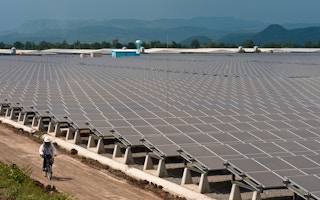Covid-19 has had a broadly negative impact across all areas of the energy industry and all regions. Back in June, a report by the International Energy Agency (IEA) predicted that global investment in energy projects will fall by an ‘unparalleled’ 20 per cent—equivalent to around US$400 billion—in 2020 as a result of the pandemic.
For Thailand, this disruption arrived at a critical time. The country has been pursuing ambitious economic development and energy transition targets for many now, and their strategy was beginning to reap serious rewards. Thailand’s Power Development Plan (PDP), originally approved in 2015 and later updated in 2018, aims to increase the share of non-hydro renewables in the energy mix from less than 5 per cent to 30 per cent by 2037.
Between 2016 and 2018, Thailand attracted investments of up to THB 150 billion in alternative energy; this figure was forecast to increase to as much as THB 535 billion from 2019 onwards. As of 2018, it had also achieved 42 per cent of its renewable power generation target for 2036.
Covid-19 is undeniably a spanner in the works of this progress. But could the recovery from this global crisis provide more opportunities than barriers for renewable energy development in Thailand?
Showing resilience
The pandemic has caused delays to countless energy projects due to supply chain disruption, decreased demand on account of work-from-home policies, a subsequent fall in energy prices and caution on behalf of investors navigating economic uncertainty.
However, renewables have so far held up better than other areas of the energy sector. In fact, the International Energy Agency (IEA) predicts that it will be the only energy source to grow this year—albeit by as little as 1 per cent—and has noted that oil, gas and coal will account for the majority of the predicted US$400 billion global losses.
Moving forward, renewables are expected to continue demonstrating their resilience worldwide, with new installed renewable capacity returning to 2019 levels. However, this growth will be 10 per cent lower than was forecast before the pandemic.
Nonetheless, the resilience of renewable energy in the face of global economic disruption has not gone unnoticed by agencies, governments and investors. In fact, it presents an interesting theory: could Covid-19 become an opportunity to build a better, more sustainable future?
Build back better
For years, interest in developing renewable energy has been at odds with the need for government to meet ever-increasing demand. With work-from-home policies causing a 25 per cent drop in energy consumption worldwide, Covid-19 has provided the energy industry with much-needed wiggle room to ‘build back better’.
The potential for an environmentally sustainable recovery is a win-win-win for governments, green investors and renewable energy. Despite the pandemic, governments will remain under pressure to honour their carbon reduction targets—an area where Southeast Asia is trailing other regions despite suffering the worst effects of climate change—while investors will be able to buy shares in renewables at a discount of more than 50 per cent compared to March 2020.
Thailand, in particular, has been earmarked as a promising opportunity for investors due to its low penetration level and minimal issues with its electricity grid. Compared to regional competitors like China, which is the largest renewables market in the world but is dominated by local companies, Thailand is open to—if not partially reliant on—foreign investment.
B. Grimm, the country’s biggest private power company by capacity, certainly does not appear to be slowing its planned renewables expansion. Chief executive officer Preeyanart Soontornwata has assured that the company will continue looking for business opportunities in the renewables sector despite the pandemic, and has prepared a THB 20 billion capital expenditure for business expansion and a THB 9 billion credit line for development and acquisitions.
As Ahmed Saeed, vice president for East Asia, Southeast Asia and the Pacific at the Asian Development Bank, said during a webinar on the region’s recovery from Covid-19: “Any recovery post-pandemic must be green and it must be sustainable. This crisis is a reminder to all of us that the problems that are foretold do often come to pass.”
Potential obstacles
Covid-19 may well end up presenting Thailand with unexpected opportunities in the renewables sector, but this potential is not without risk. Economic uncertainty persists and could affect Thai companies’ ability to secure funding while forcing the government to make tough decisions regarding the country’s energy mix.
There is a chance that in difficult economic circumstances, Thailand could resort to burning cheaper, more polluting fuels such as coal to cut costs. However, in light of the government and local companies’ apparent commitment to renewables, this seems unlikely.
The greater risk is that the sharp contraction in the Thai economy—one of the biggest projected declines in the region—could force the Bank of Thailand to cut interest rates, thereby making investments less competitive.
In any case, renewable energy appears to be one of the few areas of industry that stands to benefit from Covid-19. Whether this opportunity can be capitalised upon remains to be seen.
Troy Schooneman is Partner at Kudun & Partners, which provides legal advice to investors and companies in the energy sector.











